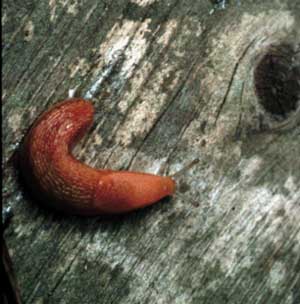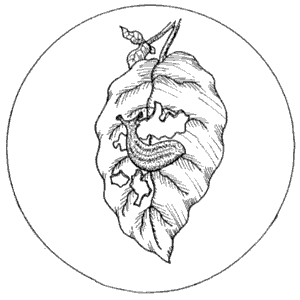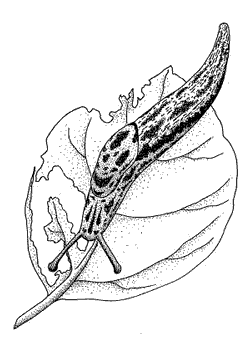Identifying Slugs and Snails
Slugs and snails are not insects but mollusks; they are related to clams and oysters. They occur throughout the United States. Depending on the region of the country they may be from 1 inch to a horrendous 5 inches long. Slugs look like brown, gray, or yellow snails without shells.
 |
Not surprisingly these pests are always most destructive in cool, moist, shaded gardens, especially so during rainy spells. Slugs are very vulnerable to dehydration which is one key to their control. Their delicate skin dries out easily, so they secrete copious amounts of silvery mucus to protect themselves. The mucus also enables them to slide smoothly over sharp or unpleasant terrain.
 |
Types of Slugs and Snails
Several species of slugs occur in the garden:
Gray garden slug (Deroceras reticulatum) is the smallest at 1 to 2 inches long and is dull gray with black spots.
Spotted garden slug (Limax maximus) is grayish with black spots or faint black longitudinal bands on its back and is much larger, reaching almost 4 inches in length.
Banana slug of the Pacific Northwest is the very largest, reaching 10 inches long and weighing about a quarter pound.
Three species of snails are also garden pests All are smaller than slugs, and the two garden snails have a rounded or globular spiral shell:
Brown garden snail (Helix aspersa)
European garden snail (Cepaea nemoralis)
Decollate snail (Rumina decollata) has a cone-shaped spiral shell.
 |
Growth Stages of Slugs
Slugs and snails are hermaphroditic, each having both male and female sex organs. They overwinter in the soil as eggs or immature slugs. In the spring immature slugs will emerge or the eggs will hatch. Many slug species reach maturity and lay eggs by fall. Others may take up to a year to reach maturity. The eggs are laid on the soil in masses of 30 to 100. Usually they are hidden beneath dead leaves, flower pots, boards, mulch, or other garden debris. A soon as slugs hatch, they are active and will move about and feed if it is warm and humid enough. They are mainly active at night and stay hidden during the day. There can be several generations a year depending on the region of the country.
Trap Slugs For Confirmed Identification
If you think you have a slug problem but have not actually seen a slug in person set out one or two baited slug traps and you'll know in a day or two. We have a number of slug traps available in Yardener's Tool Shed; click here

